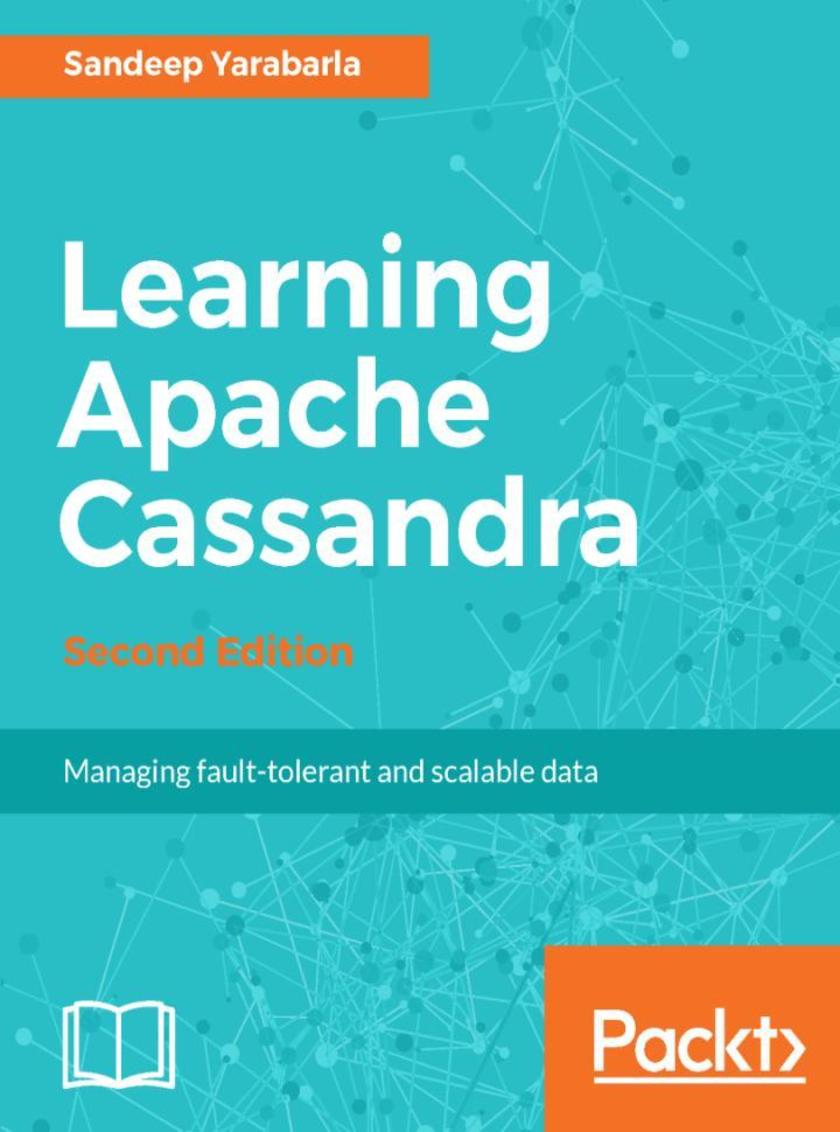
Learning Apache Cassandra - Second Edition
¥80.65
Cassandra is a distributed database that stands out thanks to its robust feature set and intuitive interface, while providing high availability and scalability of a distributed data store. This book will introduce you to the rich feature set offered by Cassandra, and empower you to create and manage a highly scalable, performant and fault-tolerant database layer. The book starts by explaining the new features implemented in Cassandra 3.x and get you set up with Cassandra. Then you'll walk through data modeling in Cassandra and the rich feature set available to design a flexible schema. Next you'll learn to create tables with composite partition keys, collections and user-defined types and get to know different methods to avoid denormalization of data. You will then proceed to create user-defined functions and aggregates in Cassandra. Then, you will set up a multi node cluster and see how the dynamics of Cassandra change with it. Finally, you will implement some application-level optimizations using a Java client. By the end of this book, you'll be fully equipped to build powerful, scalable Cassandra database layers for your applications. What you will learn ?Install Cassandra ?Create keyspaces and tables with multiple clustering columns to organize related data ?Use secondary indexes and materialized views to avoid denormalization of data
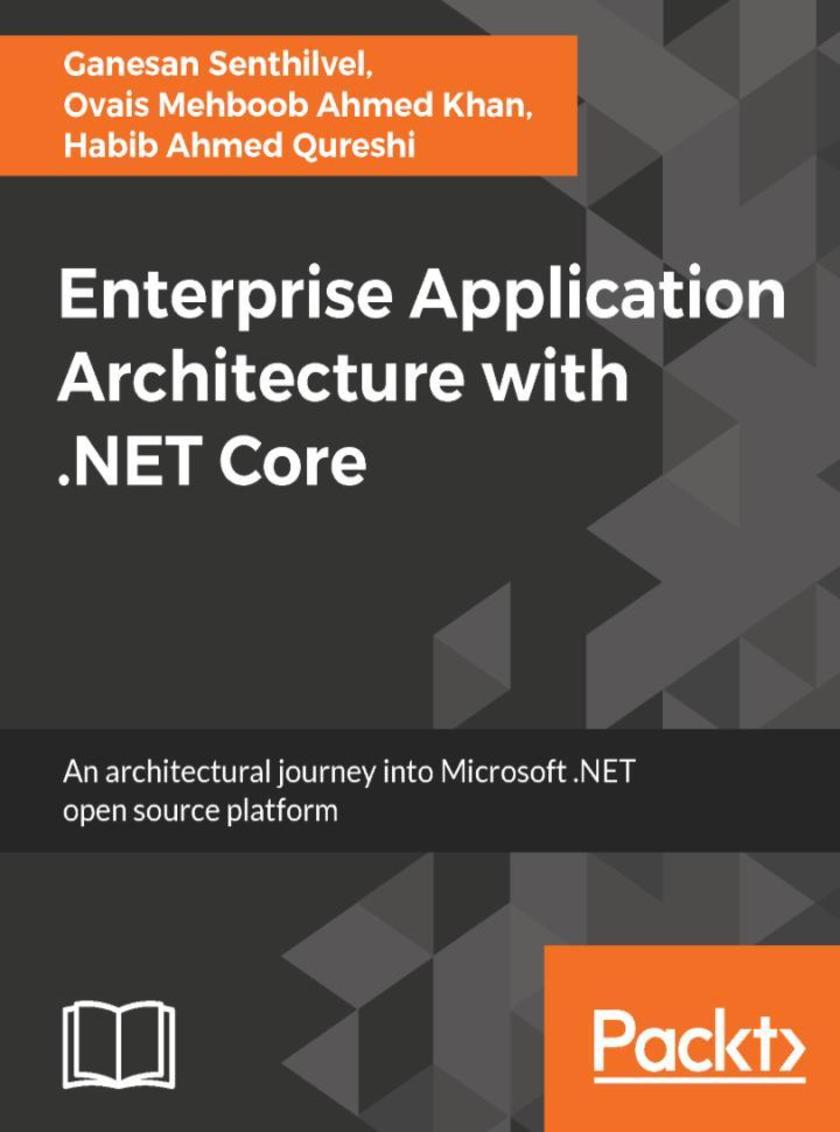
Enterprise Application Architecture with .NET Core
¥90.46
If you want to design and develop enterprise applications using .NET Core as the development framework and learn about industry-wide best practices and guidelines, then this book is for you. The book starts with a brief introduction to enterprise architecture, which will help you to understand what enterprise architecture is and what the key components are. It will then teach you about the types of patterns and the principles of software development, and explain the various aspects of distributed computing to keep your applications effective and scalable. These chapters act as a catalyst to start the practical implementation, and design and develop applications using different architectural approaches, such as layered architecture, service oriented architecture, microservices and cloud-specific solutions. Gradually, you will learn about the different approaches and models of the Security framework and explore various authentication models and authorization techniques, such as social media-based authentication and safe storage using app secrets. By the end of the book, you will get to know the concepts and usage of the emerging fields, such as DevOps, BigData, architectural practices, and Artificial Intelligence.
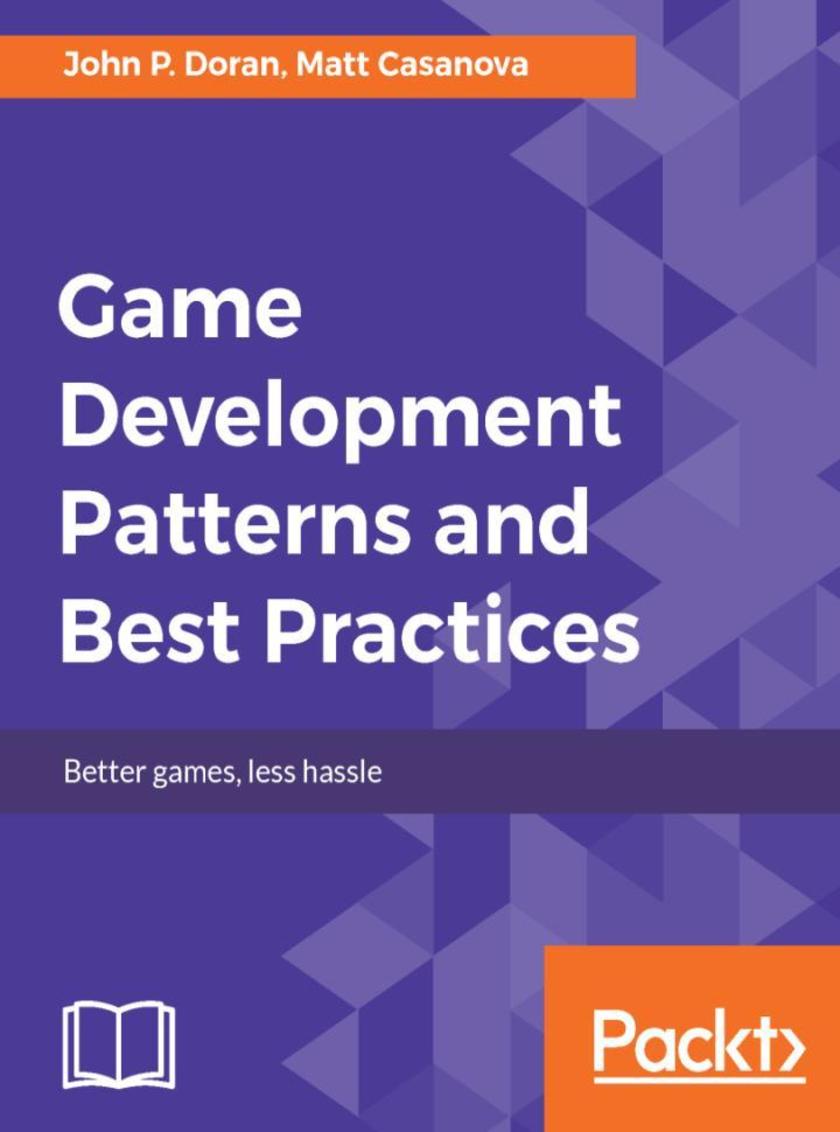
Game Development Patterns and Best Practices
¥80.65
Utilize proven solutions to solve common problems in game development About This Book ?Untangle your game development workflow, make cleaner code, and create structurally solid games ?Implement key programming patterns that will enable you to make efficient AI and remove duplication ?Optimize your game using memory management techniques Who This Book Is For If you are a game developer who wants to solve commonly-encountered issues or have some way to communicate to other developers in a standardized format, then this book is for you. Knowledge of basic game programming principles and C++ programming is assumed. What You Will Learn ?Learn what design patterns are and why you would want to use them ?Reduce the maintenance burden with well-tested, cleaner code ?Employ the singleton pattern effectively to reduce your compiler workload ?Use the factory pattern to help you create different objects with the same creation logic and reduce coding time ?Improve game performance with Object Pools ?Allow game play to interact with physics or graphics in an abstract way ?Refractor your code to remove common code smells In Detail You've learned how to program, and you've probably created some simple games at some point, but now you want to build larger projects and find out how to resolve your problems. So instead of a coder, you might now want to think like a game developer or software engineer. To organize your code well, you need certain tools to do so, and that's what this book is all about. You will learn techniques to
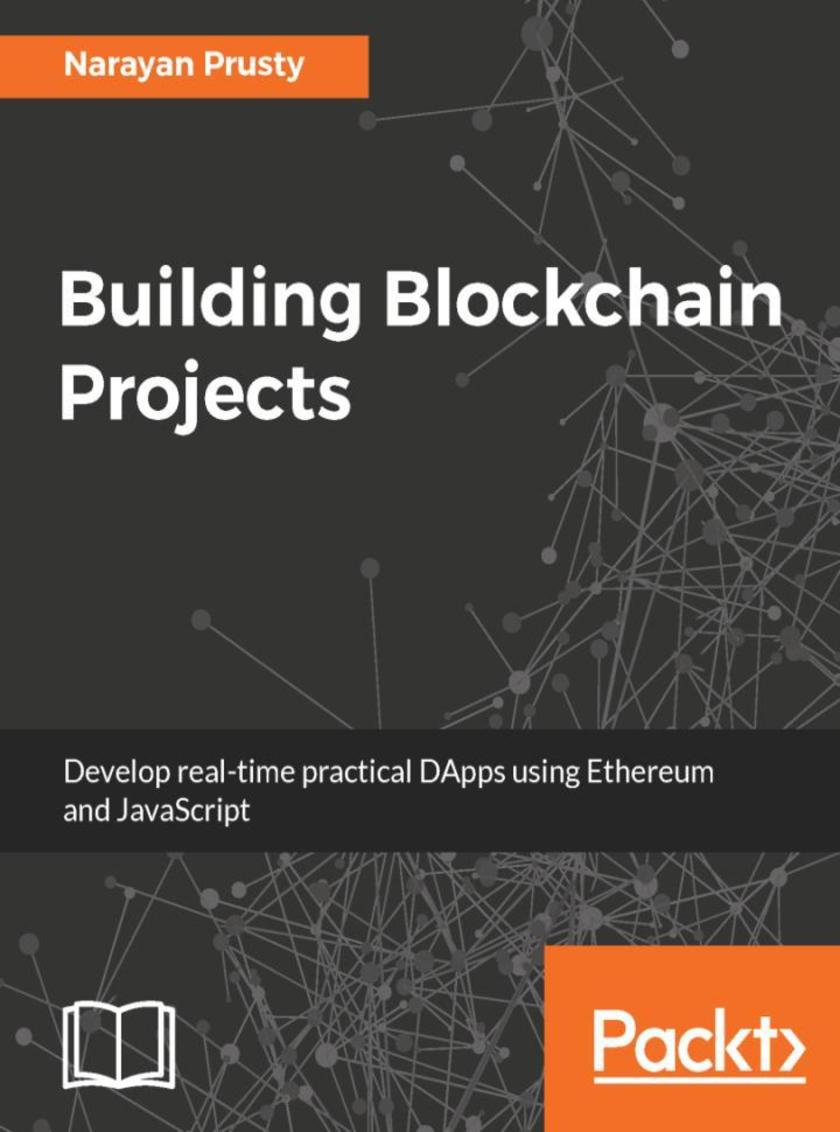
Building Blockchain Projects
¥80.65
Key Features ?Create powerful, end-to-end applications for Blockchain using Ethereum ?Write your first program using the Solidity programming language ?Change the way you think and design your applications by using the all new database-Blockchain Book De*ion Blockchain is a decentralized ledger that maintains a continuously growing list of data records that are secured from tampering and revision. Every user is allowed to connect to the network, send new transactions to it, verify transactions, and create new blocks, making it permission-less. This book will teach you what Blockchain is, how it maintains data integrity, and how to create real-world Blockchain projects using Ethereum. With interesting real-world projects, you will learn how to write smart contracts which run exactly as programmed without any chance of fraud, censorship, or third-party interference, and build end-to-end applications for Blockchain. You will learn about concepts such as cryptography in cryptocurrencies, ether security, mining , smart contracts, solidity, and more. You will also learn about web sockets, various API services for Ethereum, and much more. The blockchain is the main technical innovation of bitcoin, where it serves as the public ledger for bitcoin transactions. What you will learn ?Walk through the basics of the Blockchain technology ?Implement Blockchain's technology and its features, and see what can be achieved using them ?Build DApps using Solidity and Web3.js ?Understand the geth command and cryptography ?Create Ethereum wallets ?Explore consortium blockchain
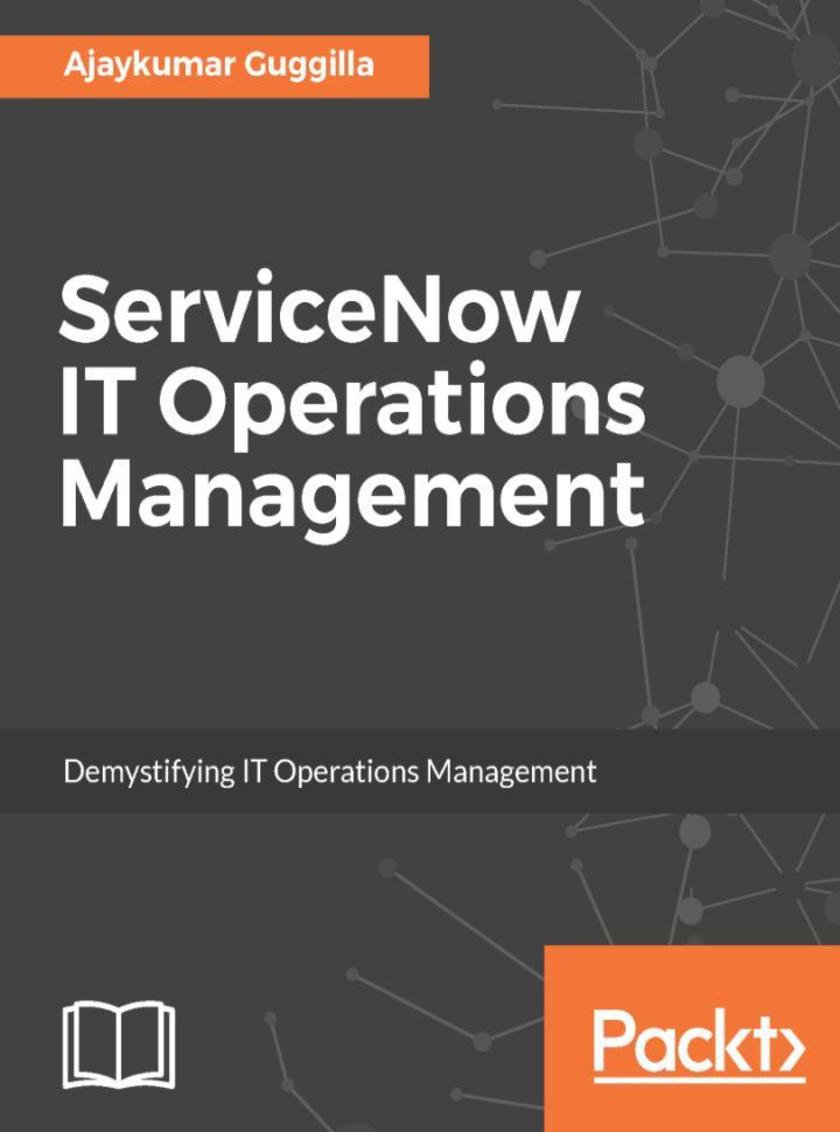
ServiceNow IT Operations Management
¥80.65
Align your business requirements with IT by implementing ServiceNow IT Operations with ease. About This Book ?Written to the latest specification, it will cover basic to advanced concepts and architecture. ?Take a service-centric approach to operations management and consolidate all your resource data into a single system IT record. ?Beat the key challenge of managing multiple business operations (even running globally) over a complex IT infrastructure and see immediate results. Who This Book Is For The book is aimed at System administrators, IT operations and IT managers who plan to implement ServiceNow IT Operations Management for their organization. They have no knowledge of ServiceNow ITOM. What You Will Learn ?Step by step guide in setting up each features with in ServiceNow ITOM ?Install and configure the required application or plugin ?Integrate with other provider services as deemed appropriate ?Explore Orchestration capabilities and how to analyze the data ?Learn about the ServiceNow graphical interface ?Integrate with other applications within ServiceNow ?Aims to cover the fundamentals concepts to advanced concepts ?Best practices and advanced features In Detail ServiceNow ITOM enables infrastructure and processes to be managed in a highly automated manner. It contains various segments that ensure its applications and enterprise infrastructures are optimized for high performance and helps in creating a lean and agile organization through service-level visibility and automation. This book will be a
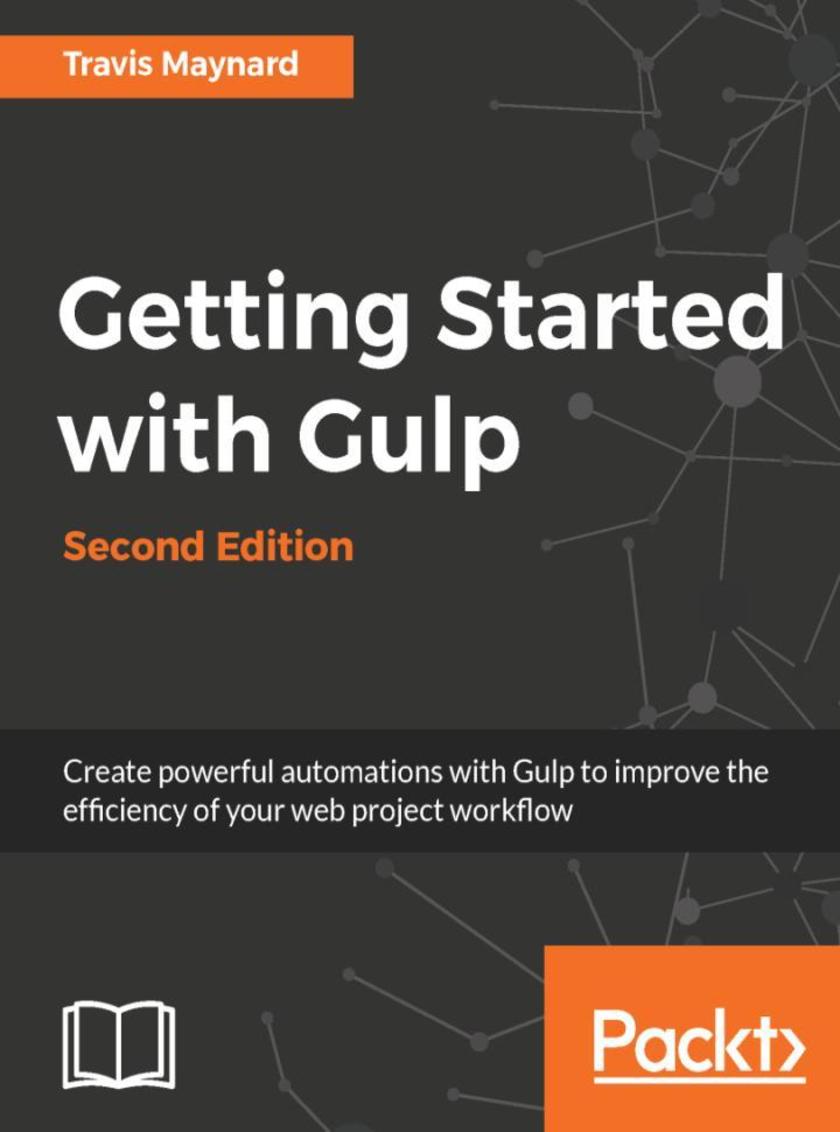
Getting Started with Gulp – Second Edition
¥54.49
"Key Features ?Gain a solid understanding of Gulp and write your own custom tasks from scratch ?Discover ways to add additional functionality to improve your tasks ?Get up-and-running with new features added to the latest version of Gulp Book De*ion This book is a hands-on guide to get you up to speed with gulp. You will quickly learn how to install, configure, and run your own build system. It will instill you with the ability to automate several common development tasks to vastly improve your development workflow. This book first demonstrates various Gulp use cases before running through the steps of configuring, running, and customizing Gulp, providing you with core concepts of gulp, node.js, and npm. Diving a bit deeper into the gulp ecosystem, we will discuss when and why to use a node module instead of a gulp plugin. We will also go over a few issues that we can run into while using gulp and learn about ways to work around them to improve your gulp experience. By the end of this book, you will be able to create your very own gulp build from scratch, create and maintain tasks and project builds, and automate your workflow with plugins and custom tasks. What you will learn ?How to use a command-line interface. ?Learn about Gulp, Node.js, and npm and how they work together. ?Create a Gulpfile from scratch and implement it into a project. ?Write basic tasks that will concatenate, minify, compress, and pre-process your files. ?Write advanced tasks that will run a local server, sync file changes to your browser, and allow you to write client-side JavaScript using ES2015. "
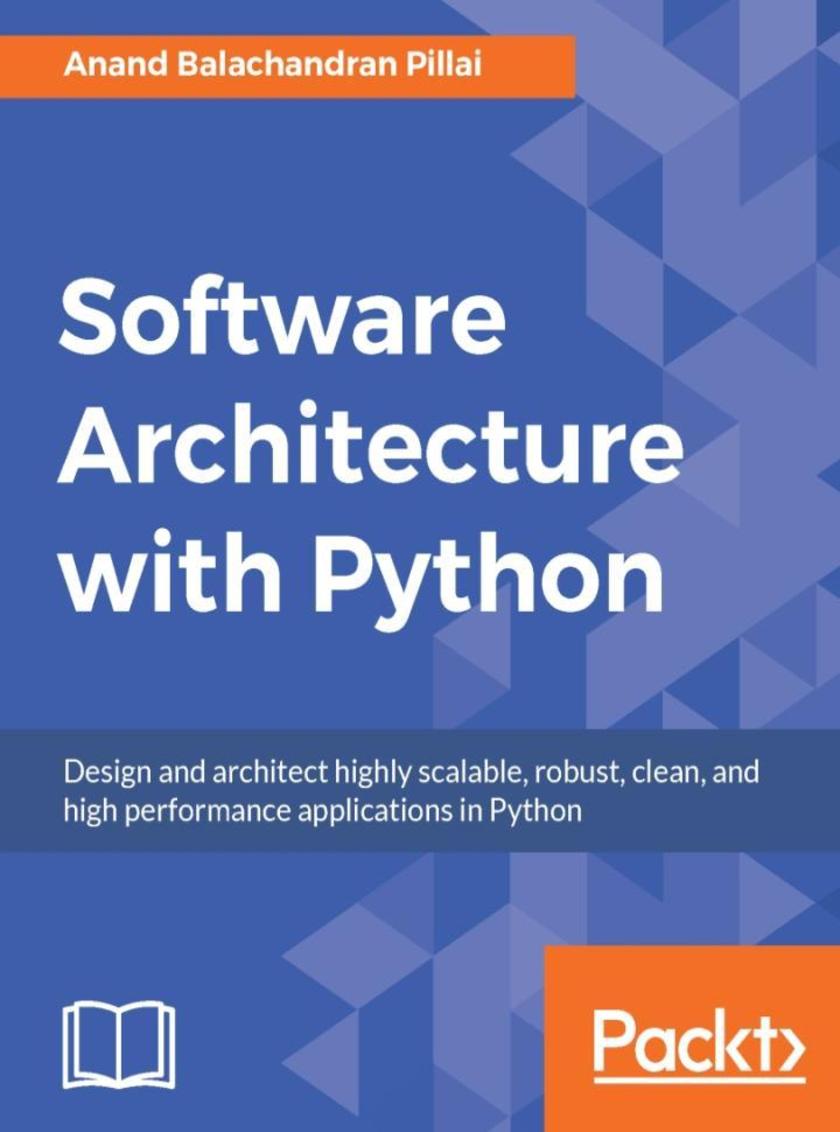
Software Architecture with Python
¥90.46
"Key Features ?Identify design issues and make the necessary adjustments to achieve improved performance ?Understand practical architectural quality attributes from the perspective of a practicing engineer and architect using Python ?Gain knowledge of architectural principles and how they can be used to provide accountability and rationale for architectural decisions Book De*ion This book starts off by explaining how Python fits into an application architecture. As you move along, you will understand the architecturally significant demands and how to determine them. Later, you'll get a complete understanding of the different architectural quality requirements that help an architect to build a product that satisfies business needs, such as maintainability/reusability, testability, scalability, performance, usability, and security. You will use various techniques such as incorporating DevOps, Continuous Integration, and more to make your application robust. You will understand when and when not to use object orientation in your applications. You will be able to think of the future and design applications that can scale proportionally to the growing business. The focus is on building the business logic based on the business process documentation and which frameworks are to be used when. We also cover some important patterns that are to be taken into account while solving design problems as well as those in relatively new domains such as the Cloud. This book will help you understand the ins and outs of Python so that you can make those critical design decisions that not just live up to but also surpass the expectations of your clients. What you will learn ?Build programs with the right architectural attributes ?Use Enterprise Architectural Patterns to solve scalable problems on the Web ?Understand design patterns from a Python perspective ?Optimize the performance testing tools in Python ?Deploy code in remote environments or on the Cloud using Python ?Secure architecture applications in Python About the Author Anand Balachandran Pillai is an Engineering and Technology professional with over 18 years of experience in the software industry in Product Engineering, Software Design & Architecture and Research. He has a Bachelor's degree in Mechanical Engineering from the Indian Institute of Technology, Madras. He has worked at companies such as Yahoo!, McAfee, and Infosys in the roles of Lead Engineer and Architect in product development teams, to build new products. His interests lie in Software Performance Engineering, High Scalability Architectures, Security and Open source communities. He often works with startups in lead technical or consulting role. He is the founder of the Bangalore Python Users Group and a Fellow of the Python Software Foundation (PSF). Anand is currently working as Senior Architect of Yegii Inc. "

Never Goodnight
¥110.46
The cult Swedish graphic novel that inspired the critically acclaimed Lukas Moodysson film We Are the Best! Coco, Klara and Mathilda have known each other since primary school, where they met in folk dancing class. Now they’re almost teenagers, and their anarchist ideals and dreams of forming a world-beating punk band set them apart from the other girls at school. They can’t play any instruments, practice with pillows and pans, and keep getting told that punk is dead. But they’re not going to let any of those things get in their way… Published in English for the first time, Never Goodnight is a hilarious and life-affirming memoir which will remind you that all you need in life is your best friends, a can of hairspray and three guitar chords.

The Monster Trilogy
¥68.28
Dracula Unbound, Frankenstein Unbound and Moreau’s Other Island all together in one eBook. All of Aliss’ Monster Trilogy in one place. Moreau’s Other Island Welcome to Dr Moreau’s other island. Place of untold horros. Home of the Beast Men… Available for the first time in eBook. He stands very tall, long prosthetic limbs glistening in the harsh sun, withered body swaying, carbine and whip clasped in artificial hands. Man-beasts cower on the sand as he brandishes his gun in the air. He is Dr Moreau, ruler of the fabulous, grotesque island, where humans are as brutes and brutes as humans, where the future of the entire human race is being reprogrammed. The place of untold horrors. The place of the New Man. Frankenstein Unbound When Joe Bodenland is suddenly transported back in time to the year 1816, his first reaction is of eager curiosity rather than distress… This is Aldiss’ response to Mary Shelley’s Frankenstein, available for the first time in eBook. When Joe Bodenland is suddenly transported back in time to the year 1816, his first reaction is of eager curiosity rather than distress. Certainly the Switzerland in which he finds himself, with its charming country inns, breathtaking landscapes and gentle, unmechanised pace of life, is infinitely preferable to the America of 2020 where the games of politicians threaten total annihilation. But after meeting the brooding young Victor Frankenstein, Joe realises that this world is more complex than the one he left behind. Is Frankenstein real, or are both Joe and he living out fictional lives? Dracula Unbound A dramatic reworking of the vampire myth in a way that only Brian Aldiss can… Available for the first time in eBook. When Bram Stoker was writing his famous novel, Dracula, at the end of the 19th century he received a visitor named Joe Bodenland. While the real Count Dracula came from the distant past, Joe arrived from Stoker’s future – on a desperate mission to save humanity from the undead.
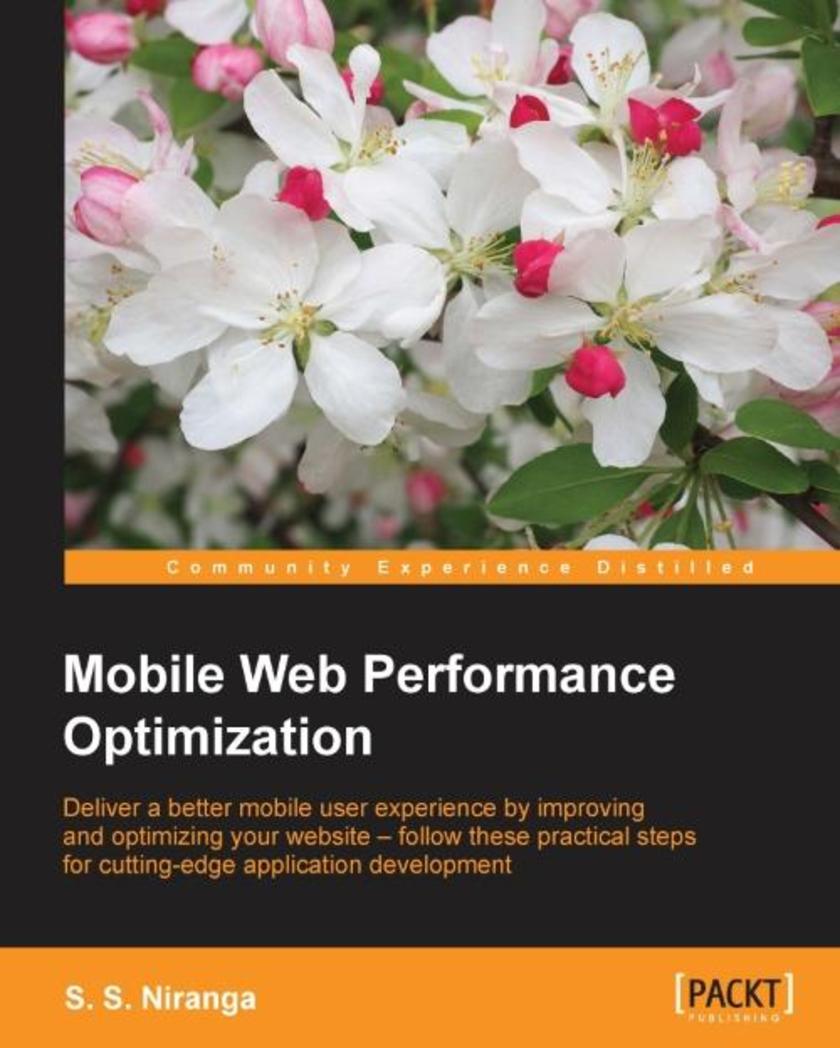
Mobile Web Performance Optimization
¥54.49
Deliver a better mobile user experience by improving and optimizing your website – follow these practical steps for cutting-edge application development About This Book Optimize your website or application for an improved mobile performance Learn how to create lightweight, intuitive mobile UI and make sure it's supported by a robust application architecture Find out how to improve the performance of your applications by asking the right design questions at each stage in the development workflow Who This Book Is For This book has been created for web developers who want to optimize their website for today’s mobile users. If you understand just how important user experience is, this book is for you – it will help you throughout the entire optimization process. What You Will Learn Learn the three pillars of mobile performance Find out how to ask – and answer – crucial design questions such as ‘mobile or responsive?’ Learn how to minify CSS and JavaScript for improved performance Monitor and debug your website with the leading browser testing tools Explore the impact of caching on performance – and improve it using JavaScript and CSS frameworks Make third-party plugins your friend – avoid common issues and pitfalls In Detail With users increasingly accessing the web on mobile devices, it’s crucial to make sure your website is built to seamlessly fit this radical change in user behavior. Mobile Web Performance Optimization is designed to help you do exactly that – it’s been created to help you build fast, and mobile-user-friendly websites and applications. Featuring guidance through a range of techniques and tools essential to modern mobile development, this accessible guide will make sure you’re delivering a seamless and intuitive experience for your website’s users. Begin by exploring the fundamental components of mobile web design and website optimization, before learning how to put the concepts into practice. Featuring cross-platform solutions, insights on developing lightweight yet robust UI, and insights on how to successfully manage data, this application development book takes you through every stage in the development process – so you can be confident that you’re asking the right questions and using the best tools in the most effective way. By the end, you’ll understand implicitly what it means to ‘build for performance’- you’ll be a more confident developer, capable of building projects that adapt to a changing world. Style and approach This book takes a step-by-step approach to mobile web optimization, explaining the topics in a conversational and easy-to-follow style. Each topic includes detailed explanations of the basic and advanced features of mobile web optimization.
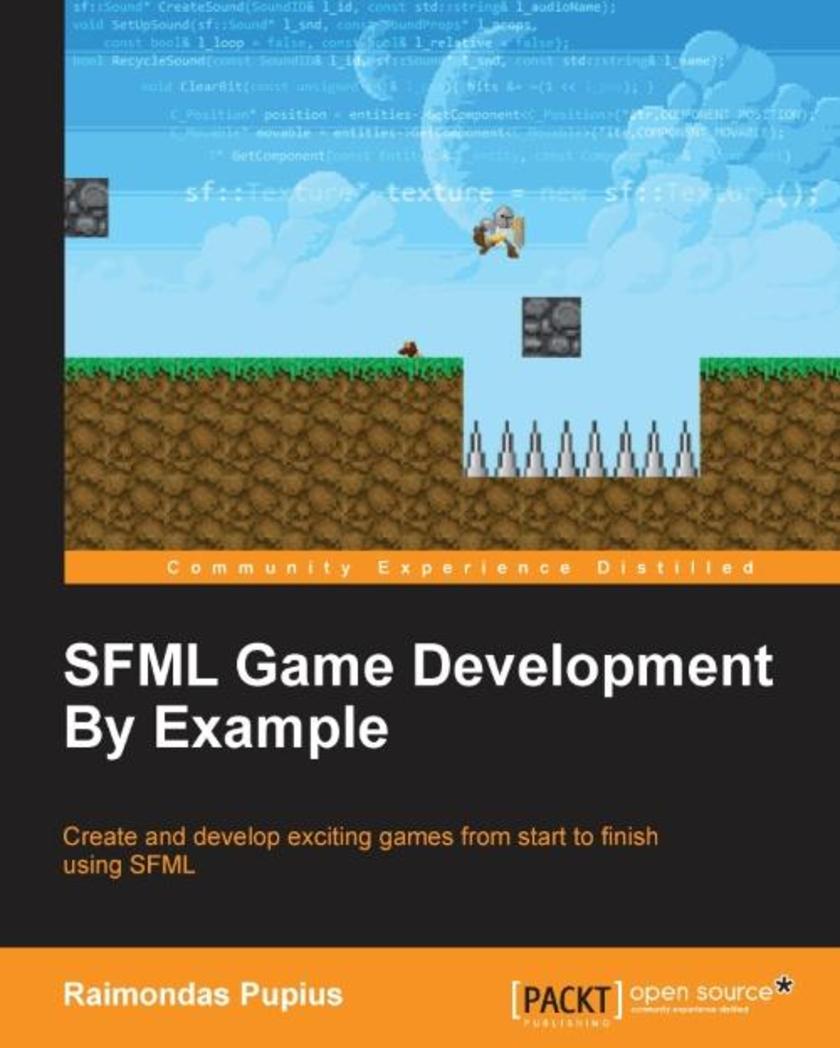
SFML Game Development By Example
¥90.46
Create and develop exciting games from start to finish using SFML About This Book Familiarize yourself with the SFML library and explore additional game development techniques Craft, shape, and improve your games with SFML and common game design elements A practical guide that will teach you how to use utilize the SFML library to build your own, fully functional applications Who This Book Is For This book is intended for game development enthusiasts with at least decent knowledge of the C++ programming language and an optional background in game design. What You Will Learn Create and open a window by using SFML Utilize, manage, and apply all of the features and properties of the SFML library Employ some basic game development techniques to make your game tick Build your own code base to make your game more robust and flexible Apply common game development and programming patterns to solve design problems Handle your visual and auditory resources properly Construct a robust system for user input and interfacing Develop and provide networking capabilities to your game< In Detail Simple and Fast Multimedia Library (SFML) is a simple interface comprising five modules, namely, the audio, graphics, network, system, and window modules, which help to develop cross-platform media applications. By utilizing the SFML library, you are provided with the ability to craft games quickly and easily, without going through an extensive learning curve. This effectively serves as a confidence booster, as well as a way to delve into the game development process itself, before having to worry about more advanced topics such as “rendering pipelines” or “shaders.” With just an investment of moderate C++ knowledge, this book will guide you all the way through the journey of game development. The book starts by building a clone of the classical snake game where you will learn how to open a window and render a basic sprite, write well-structured code to implement the design of the game, and use the AABB bounding box collision concept. The next game is a simple platformer with enemies, obstacles and a few different stages. Here, we will be creating states that will provide custom application flow and explore the most common yet often overlooked design patterns used in game development. Last but not the least, we will create a small RPG game where we will be using common game design patterns, multiple GUI. elements, advanced graphical features, and sounds and music features. We will also be implementing networking features that will allow other players to join and play together. By the end of the book, you will be an expert in using the SFML library to its full potential. Style and approach An elaborate take on the game development process in a way that compliments the reader’s existing knowledge, this book provides plenty of examples and is kind to the uninitiated. Each chapter builds upon the knowledge gained from the previous one and offers clarifications on common issues while still remaining within the scope of its own subject and retaining clarity.
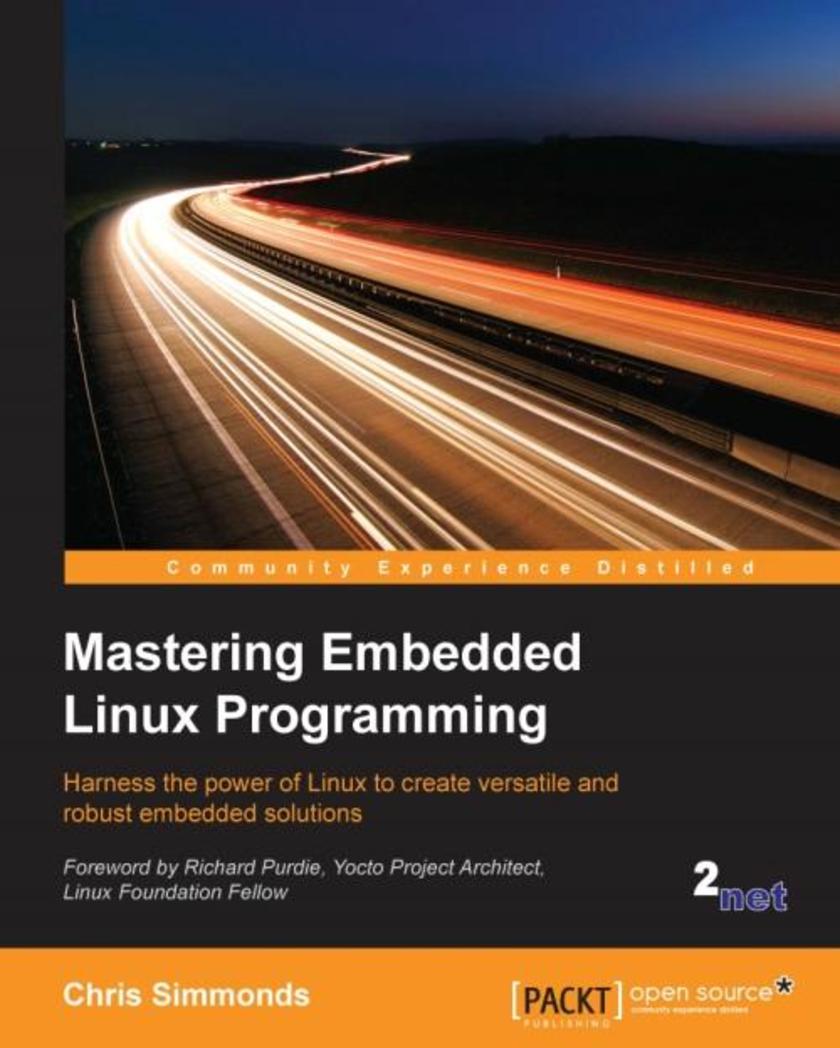
Mastering Embedded Linux Programming
¥90.46
Harness the power of Linux to create versatile and robust embedded solutions About This Book Create efficient and secure embedded devices using Linux Minimize project costs by using open source tools and programs Explore each component technology in depth, using sample implementations as a guide Who This Book Is For This book is ideal for Linux developers and system programmers who are already familiar with embedded systems and who want to know how to create best-in-class devices. A basic understanding of C programming and experience with systems programming is needed. What You Will Learn Understand the role of the Linux kernel and select an appropriate role for your application Use Buildroot and Yocto to create embedded Linux systems quickly and efficiently Create customized bootloaders using U-Boot Employ perf and ftrace to identify performance bottlenecks Understand device trees and make changes to accommodate new hardware on your device Write applications that interact with Linux device drivers Design and write multi-threaded applications using POSIX threads Measure real-time latencies and tune the Linux kernel to minimize them In Detail Mastering Embedded Linux Programming takes you through the product cycle and gives you an in-depth de*ion of the components and options that are available at each stage. You will begin by learning about toolchains, bootloaders, the Linux kernel, and how to configure a root filesystem to create a basic working device. You will then learn how to use the two most commonly used build systems, Buildroot and Yocto, to speed up and simplify the development process. Building on this solid base, the next section considers how to make best use of raw NAND/NOR flash memory and managed flash eMMC chips, including mechanisms for increasing the lifetime of the devices and to perform reliable in-field updates. Next, you need to consider what techniques are best suited to writing applications for your device. We will then see how functions are split between processes and the usage of POSIX threads, which have a big impact on the responsiveness and performance of the final device The closing sections look at the techniques available to developers for profiling and tracing applications and kernel code using perf and ftrace. Style and approach This book is an easy-to-follow and pragmatic guide consisting of an in-depth analysis of the implementation of embedded devices. Each topic has a logical approach to it; this coupled with hints and best practices helps you understand embedded Linux better.
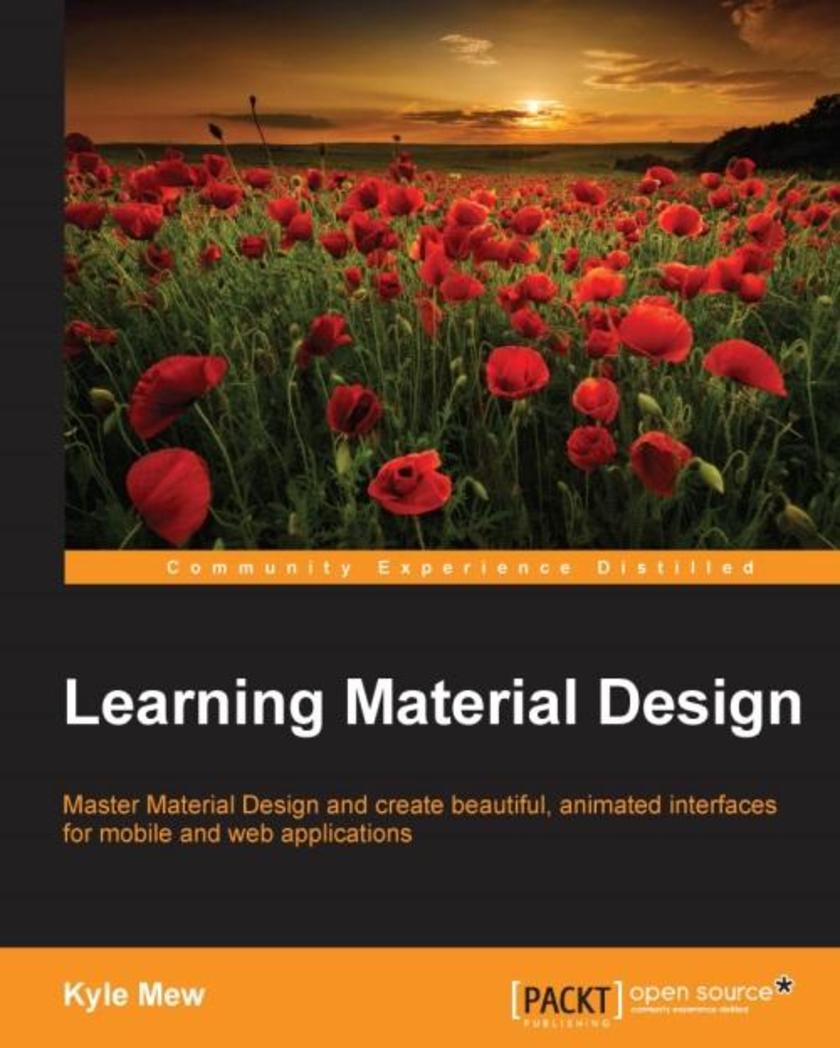
Learning Material Design
¥63.21
Master Material Design and create beautiful, animated interfaces for mobile and web applications About This Book Master the highly acclaimed Material Design paradigm and give your apps and pages the look that everyone is talking about Get a mix of key theoretical concepts combined with enough practical examples to put each theory into practice so you can create elegant material interfaces with Android Studio and Polymer Written by Kyle Mew, successful author with over a decade of mobile and web development experience, this book has both the touch of a developer as well as an experienced writer Who This Book Is For This book is ideal for web developers and designers who are interested in implementing Material Design in their mobile and web apps. No prior knowledge or experience of Material Design is required, but some familiarity with procedural languages such as Java and markup languages such as HTML will provide an advantage. What You Will Learn Implement Material Design on both mobile and web platforms that work on older handsets and browsers Design stylish layouts with the Material Theme Create and manage cards, lists, and grids Design and implement sliding drawers for seamless navigation Coordinate components to work together Animate widgets and create transitions and animation program flow Use Polymer to bring Material Design to your web pages In Detail Google's Material Design language has taken the web development and design worlds by storm. Now available on many more platforms than Android, Material Design uses color, light, and movements to not only generate beautiful interfaces, but to provide intuitive navigation for the user. Learning Material Design will teach you the fundamental theories of Material Design using code samples to put these theories into practice. Focusing primarily on Android Studio, you’ll create mobile interfaces using the most widely used and powerful material components, such as sliding drawers and floating action buttons. Each section will introduce the relevant Java classes and APIs required to implement these components. With the rules regarding structure, layout, iconography, and typography covered, we then move into animation and transition, possibly Material Design's most powerful concept, allowing complex hierarchies to be displayed simply and stylishly. With all the basic technologies and concepts mastered, the book concludes by showing you how these skills can be applied to other platforms, in particular web apps, using the powerful Polymer library. Style and approach Learning Material Design combines the theories behind material design with practical examples of how these can be implemented and further reinforcing the guidelines covering style, layout and structure.
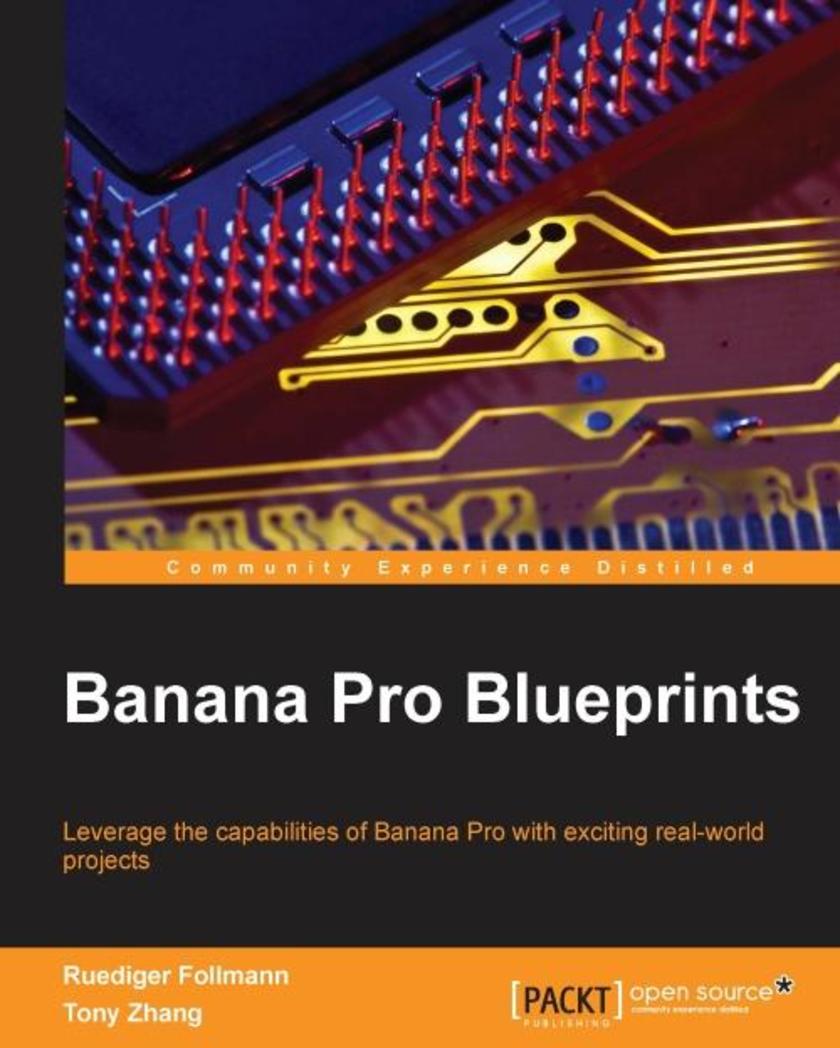
Banana Pro Blueprints
¥90.46
Leverage the capability of Banana Pi with exciting real-world projects About This Book Delve into the expanse of Banana Pi’s self-managing functionalities and develop real-world projects Gain hands-on experience of developing various wireless, multimedia, robotic, and sensor-based applications with Banana Pi Develop your applications using Banana Pi through a project-based approach Who This Book Is For This book is designed for those who are interested in exploring the capabilities of Banana Pro. Basic know-how of Linux and embedded systems would be an added advantage. What You Will Learn Remotely connect to Banana Pro and program the embedded board Use Banana Pro as a hotspot or provide an AirPlay server for wireless audio transmission Find out about the different programming languages that can be used with Banana Pro Build and program your own multimedia centre in order to watch television and movies Connect peripherals such as a camera, LCD, or hard disk to Banana Pro Manage and regulate your Linux system with Banana Pro Stream music wirelessly from your mobile phone to Banana Pro In Detail This book follows a tactical plan that will guide you through the implementation of Banana Pro and its configurations. You will then learn the various programming languages used with Banana Pi with the help of examples. In no time at all, you’ll be working on a wireless project that implements AirPlay servers, hotspots, and so on. Following this, you’ll develop a retro-style arcade kiosk game. Then we’ll move on to explore the multimedia features of Banana Pro by designing and building an enclosure for it. After this, you’ll learn to build a remote-controlled smart car and we’ll examine how to control a robotic arm. The book will conclude with the creation of a home sensor system that has the ability to expand or shrink to suit any home. Style and approach This book follows a project-based approach that covers the most important features of Banana Pro. Every chapter dives into the practical side of the implementation.
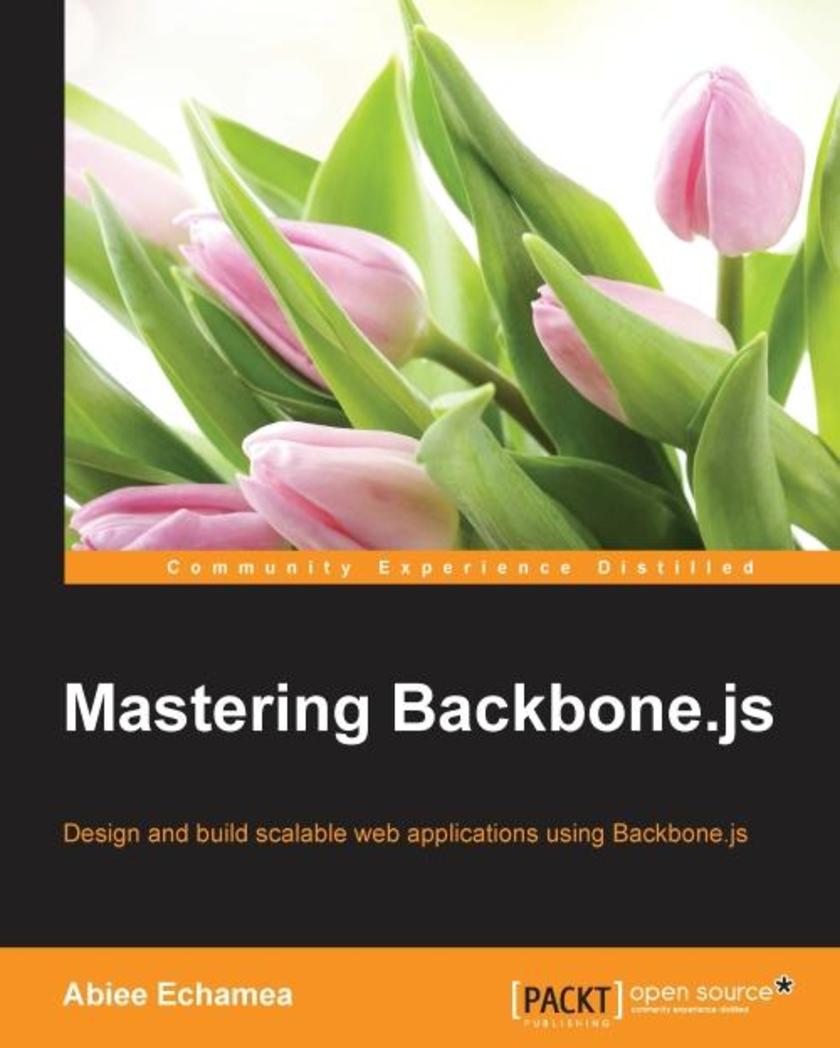
Mastering Backbone.js
¥90.46
Design and build scalable web applications using Backbone.jsAbout This BookLevel up your Backbone.js skills and create professional web applications with the best practicesUse the Backbone.js components in the right way and avoid maintenance nightmaresImprove your development workflow from application design to deploymentApply the best practices given in this tutorial to solve day-to-day problems in your applicationsWho This Book Is ForThis book is for those developers who know the basic concepts of Backbone.js and want to build scalable applications with it. If you are looking for the best practices of using Backbone.js applied to real work applications, this book is for you. You will be able to apply architectural principles to create amazing web applications easily.What You Will LearnBuild web applications that scale with Backbone.jsDesign a powerful architecture that eliminates maintenance nightmaresUse common patterns and best practices in Backbone.js web applications developmentsPack your applications to be deployed to production environmentsClean up your code organization to a simple and maintainable architectureTest your components and get confidence with your codeDeal with common scenarios like file uploading and login issuesIn DetailBackbone.js is a popular library to build single page applications used by many start-ups around the world because of its flexibility, robustness and simplicity. It allows you to bring your own tools and libraries to make amazing webapps with your own rules. However, due to its flexibility it is not always easy to create scalable applications with it. By learning the best practices and project organization you will be able to create maintainable and scalable web applications with Backbone.js.With this book you will start right from organizing your Backbone.js application to learn where to put each module and how to wire them. From organizing your code in a logical and physical way, you will go on to delimit view responsibilities and work with complex layouts.Synchronizing models in a two-way binding can be difficult and with sub resources attached it can be even worse. The next chapter will explain strategies for how to deal with these models. The following chapters will help you to manage module dependencies on your projects, explore strategies to upload files to a RESTful API and store information directly in the browser for using it with Backbone.js. After testing your application, you are ready to deploy it to your production environment. The final chapter will cover different flavors of authorization.The Backbone.js library can be difficult to master, but in this book you will get the necessary skill set to create applications with it, and you will be able to use any other library you want in your stack.Style and approachThis book takes a tutorial approach to help you scale your Backbone.js applications. It builds a web application using the best practices and applies architectural design principles to develop maintainable web-apps. Each chapter explains the design decisions and improves the project that is used as an example alongside the book.
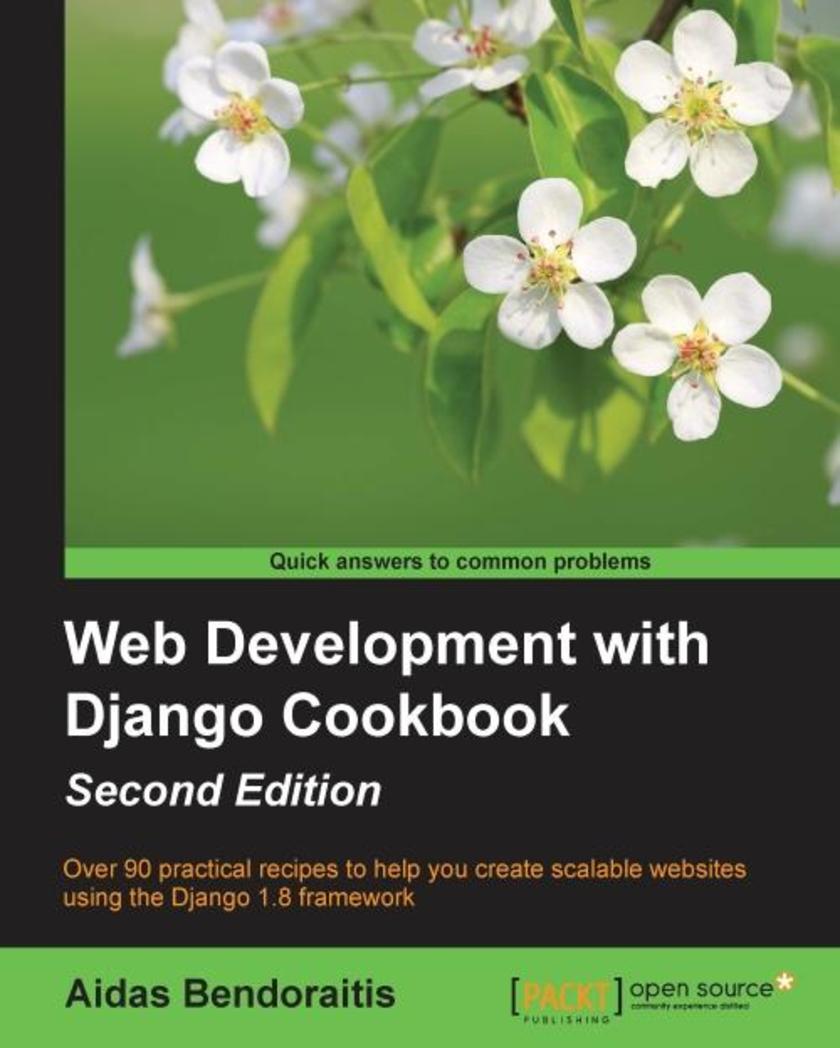
Web Development with Django Cookbook - Second Edition
¥90.46
Over 70 practical recipes to help you create scalable websites using the Django 1.8 frameworkAbout This BookThis is the latest book on the market that will help you take advantage of the new features added to Django 1.8This book consists of recipes of varying complexities to help you create multilingual, responsive, and scalable websites with DjangoThis updated edition teaches you major Django functions and will help you improve your skills by developing models, forms, views, and templatesWho This Book Is ForThis book is for intermediate-level and professional Django users who need to build projects that are multilingual, functional on devices of different screen sizes, and that scale over a period of time. If you have created websites with Django but you want to sharpen your knowledge and learn some good approaches to different aspects of web development, you should definitely read this book.What You Will LearnGet started with the basic configuration necessary to start any Django projectBuild a database structure out of reusable model mixinsManage forms and views and get to know some useful patterns that are used to create themCreate handy template filters and tags that you can reuse in every projectIntegrate your own functionality into the Django CMSManage hierarchical structures with MPTTImport data from local sources and external web services as well as exporting your data to third partiesImplement a multilingual search with HaystackTest and deploy your project efficientlyIn DetailDjango is a web framework that was designed to strike a balance between rapid web development and high performance. It has the capacity to handle applications with high levels of user traffic and interaction, and can integrate with massive databases on the backend, constantly collecting and processing data in real time.Through this book, you'll discover that collecting data from different sources and providing it to others in different formats isn't as difficult as you thought. It follows a task-based approach to guide you through all the web development processes using the Django framework. We’ll start by setting up the virtual environment for a Django project and configuring it. Then you’ll learn to write reusable pieces of code for your models and find out how to manage database schema changes using South migrations. After that, we’ll take you through working with forms and views to enter and list data. With practical examples on using templates and JavaScript together, you will discover how to create the best user experience. In the final chapters, you'll be introduced to some programming and debugging tricks and finally, you will be shown how to test and deploy the project to a remote dedicated server.By the end of this book, you will have a good understanding of the new features added to Django 1.8 and be an expert at web development processes.Style and approachEvery chapter consists of practical examples and a mix of basic and advanced recipes that will guide you through the entire web development process, starting from project configuration and taking you right through to deployment.
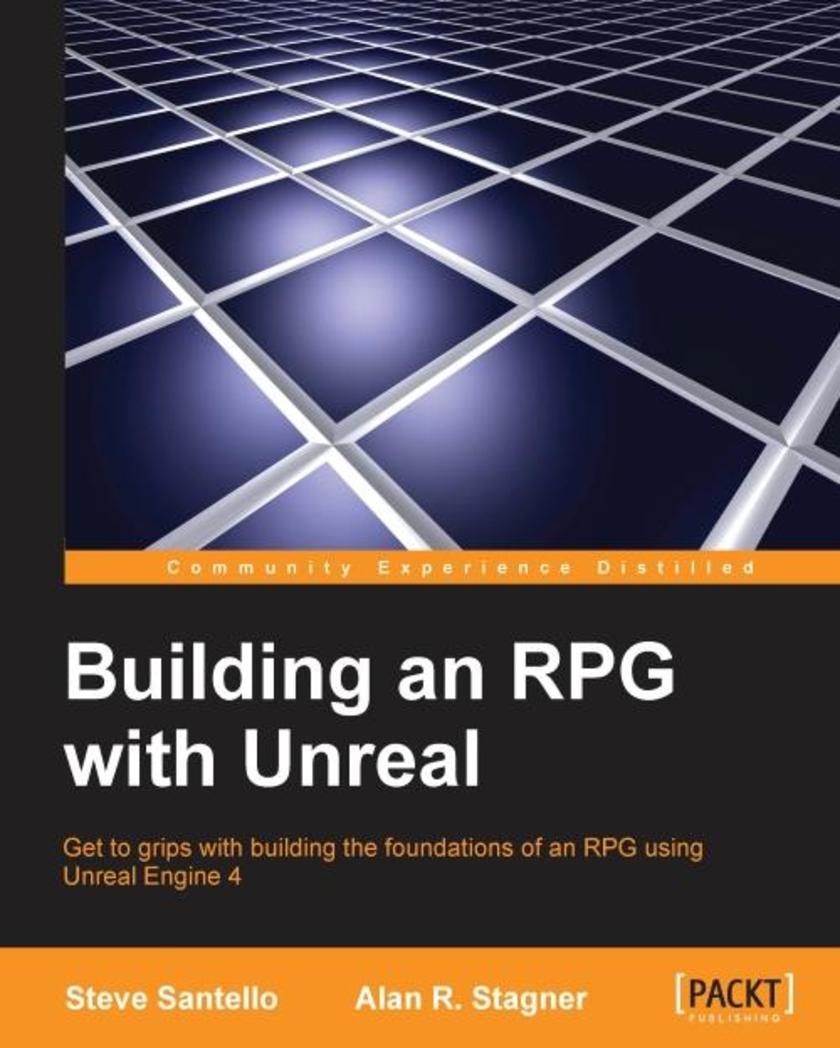
Building an RPG with Unreal
¥90.46
Get to grips with building the foundations of an RPG using Unreal Engine 4About This BookUtilize a mixture of C++, Blueprints, and UMG to create a role playing game (RPG) efficientlyCreate reusable code chunks and elements that can easily be integrated into other gamesA cost effective, step-by-step guide to building and customizing an entire framework for your RPGWho This Book Is ForIf you are new to Unreal Engine and always wanted to * an RPG, you are this book’s target reader. The lessons assume you understand the conventions of RPG games and have some awareness of the basics of using the Unreal editor to build level.What You Will LearnProgram gameplay elements in C++ in UnrealCreate custom game data for entities such as players and enemiesCreate a turn-based combat engineDesign menu systems and blueprint logicCreate an NPC and dialog systemIntegrate equipment and itemsDevelop the foundations of a saving and loading systemIn DetailNow that Unreal Engine 4 has become one of the most cutting edge game engines in the world, developers are looking for the best ways of creating games of any genre in the engine. This book will lay out the foundation of creating a turn-based RPG in Unreal Engine 4.The book starts by walking you through creating a turn-based battle system that can hold commands for party members and enemies. You’ll get your hands dirty by creating NPCs such as shop owners, and important mechanics, that make up every RPG such as a currency system, inventory, dialogue, and character statistics. Although this book specifically focuses on the creation of a turn-based RPG, there are a variety of topics that can be utilized when creating many other types of genres.By the end of the book, you will be able to build upon core RPG framework elements to create your own game experience.Style and approachYou will follow a series of lessons detailing the elements that contribute to an RPG. By the end of the book, you will have considerably leveled up your ability to make your own game
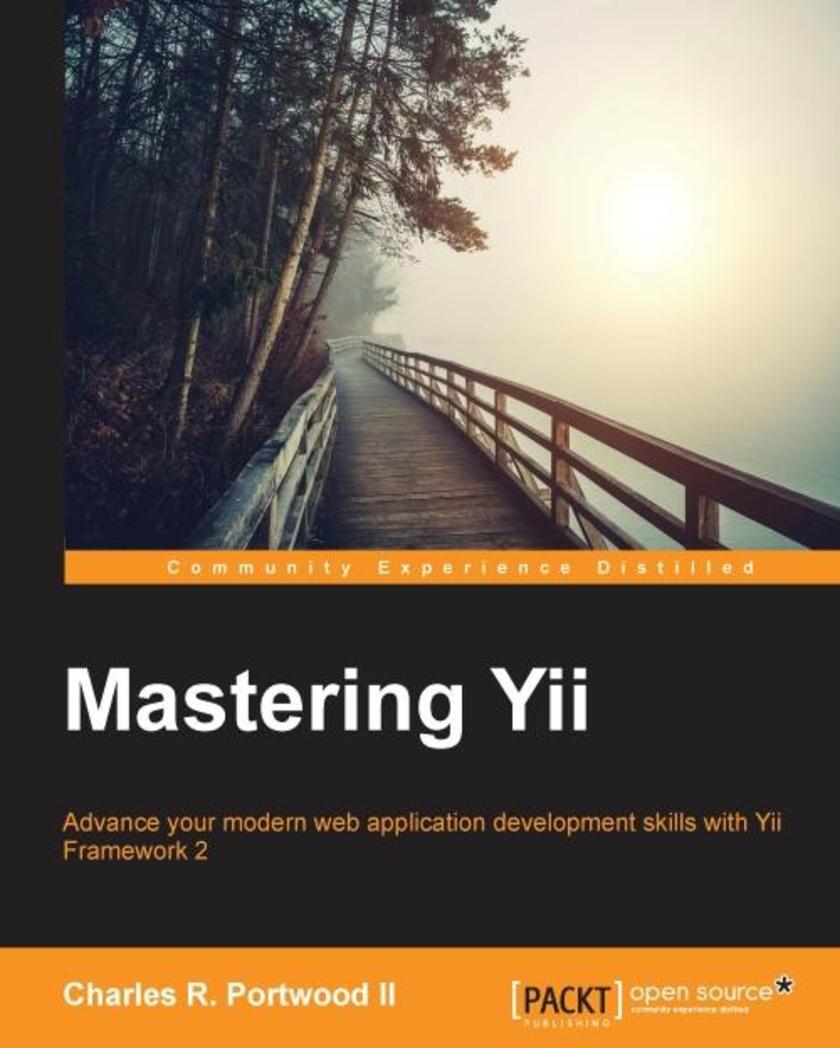
Mastering Yii
¥90.46
Advance your modern web application development skills with Yii Framework 2About This BookLearn to work with the key aspects of Yii Framework 2Explore how to create RESTful APIs with YiiIncorporate codeception with Yii2 to test your code thoroughlyWho This Book Is ForThis book is for Yii Framework developers who want to quickly master Yii2. This book assumes some familiarity with Yii2, PHP 5, and HTML5.What You Will LearnExplore Yii2’s conventions and learn how to properly configure Yii2Create both web and console applicationsReduce development time by learning to create classes automatically with Gii, Yii2’s automatic code generation toolUse Yii2’s database migration toolManage and access databases with Active Record, DAO, and Query BuilderHandle user authentication and authorization within Yii2Create RESTful APIs with Yii Framework 2Test applications automatically with codeceptionIn DetailThe successor of Yii Framework 1.1, Yii2 is a complete rewrite of Yii Framework, one of the most popular PHP 5 frameworks for making modern web applications. The update embraces the best practices and protocols established with newer versions of PHP, while still maintaining the simple, fast, and extendable behavior found in its predecessor.This book has been written to enhance your skills and knowledge with Yii Framework 2. Starting with configuration and how to initialize new projects, you’ll learn how to configure, manage, and use every aspect of Yii2 from Gii, DAO, Query Builder, Active Record, and migrations, to asset manager. You'll also discover how to automatically test your code using codeception.With this book by your side, you’ll have all the skills you need to quickly create rich modern web and console applications with Yii2.Style and approach This book is a step-by-step guide to mastering every aspect of Yii Framework 2. Each chapter outlines a new set of tools along with code that can be used to efficiently create modern web and console applications
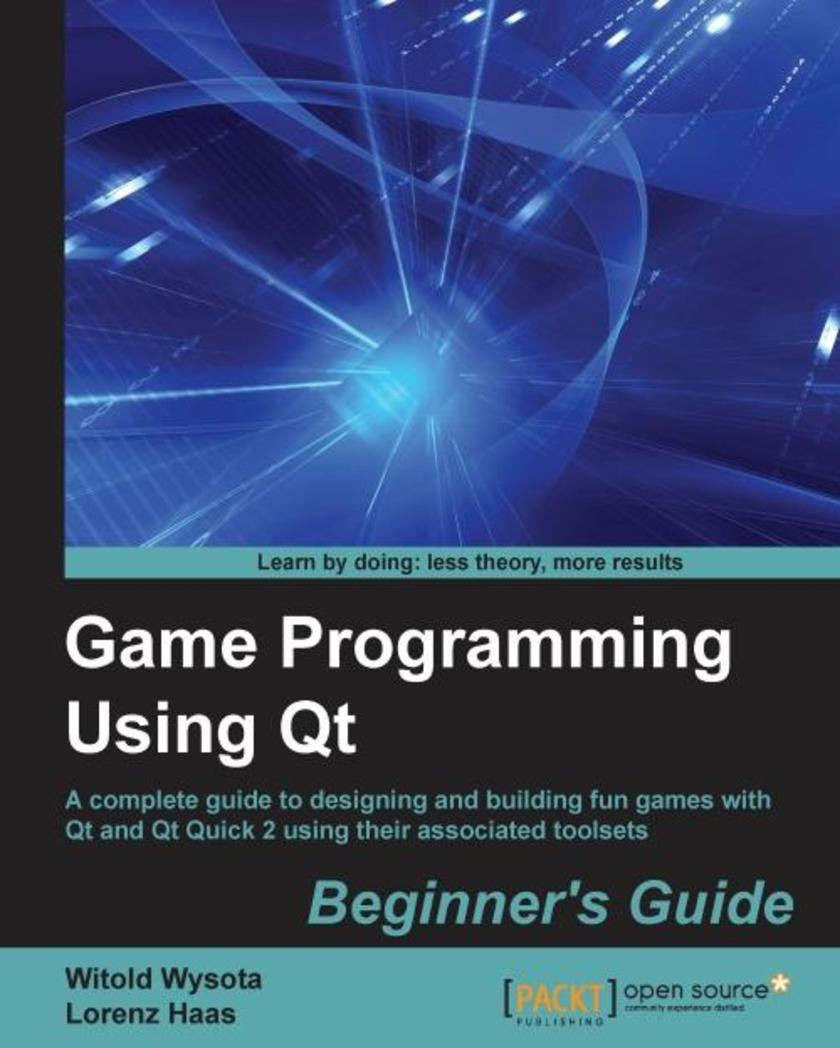
Game Programming Using Qt: Beginner's Guide
¥99.18
A complete guide to designing and building fun games with Qt and Qt Quick 2 using associated toolsetsAbout This BookLearn to create simple 2D to complex 3D graphics and games using all possible tools and widgets available for game development in QtUnderstand technologies such as QML, Qt Quick, OpenGL, and Qt Creator, and learn the best practices to use them to design gamesLearn Qt with the help of many sample games introduced step-by-step in each chapterWho This Book Is ForIf you want to create great graphical user interfaces and astonishing games with Qt, this book is ideal for you. Any previous knowledge of Qt is not required, however knowledge of C++ is mandatory.What You Will LearnInstall Qt on your systemUnderstand the basic concepts of every Qt game and applicationDevelop 2D object-oriented graphics using Qt Graphics ViewBuild multiplayer games or add a chat function to your games with Qt's Network moduleScript your game with Qt ScriptProgram resolution-independent and fluid UI using QML and Qt QuickControl your game flow as per the sensors of a mobile deviceSee how to test and debug your game easily with Qt Creator and Qt TestIn DetailQt is the leading cross-platform toolkit for all significant desktop, mobile, and embedded platforms and is becoming more popular by the day, especially on mobile and embedded devices. Despite its simplicity, it's a powerful tool that perfectly fits game developers’ needs. Using Qt and Qt Quick, it is easy to build fun games or shiny user interfaces. You only need to create your game once and deploy it on all major platforms like iOS, Android, and WinRT without changing a single source file.The book begins with a brief introduction to creating an application and preparing a working environment for both desktop and mobile platforms. It then dives deeper into the basics of creating graphical interfaces and Qt core concepts of data processing and display before you try creating a game. As you progress through the chapters, you’ll learn to enrich your games by implementing network connectivity and employing *ing. We then delve into Qt Quick, OpenGL, and various other tools to add game logic, design animation, add game physics, and build astonishing UI for the games. Towards the final chapters, you’ll learn to exploit mobile device features such as accelerators and sensors to build engaging user experiences. If you are planning to learn about Qt and its associated toolsets to build apps and games, this book is a must have.Style and approachThis is an easy-to-follow, example-based, comprehensive introduction to all the major features in Qt. The content of each chapter is explained and organized around one or multiple simple game examples to learn Qt in a fun way.
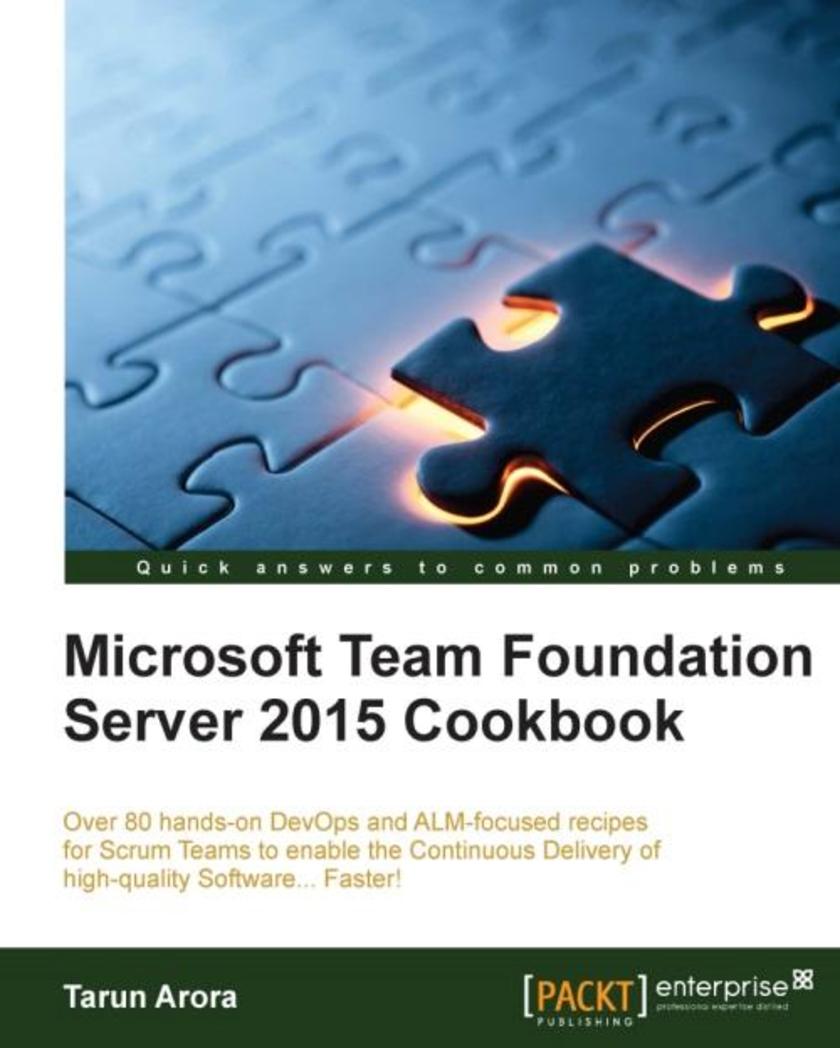
Microsoft Team Foundation Server 2015 Cookbook
¥90.46
Over 80 hands-on DevOps and ALM-focused recipes for Scrum Teams to enable the Continuous Delivery of high-quality Software... Faster!About This BookRelease high quality, reliable software quickly through building, testing, and deployment automationImprove the predictability, reliability, and availability of TFS in your organization by scheduling administration and maintenance activitiesExtend, customize, and integrate tools with TFS, enabling your teams to manage their application lifecycles effectivelyWho This Book Is ForThis book is aimed at software professionals including Developers, Testers, Architects, Configuration Analysts, and Release Managers who want to understand the capabilities of TFS to deliver better quality software faster.A working setup of TFS 2015 and some familiarity with the concepts of software life cycle management is assumed.What You Will LearnCreating a Team Project with Dashboards, Assigning License, Adding users, and Auditing AccessSetting up a Git repository in an existing TFVC-based Team ProjectSetting up branch policies and conducting Pull requests with code reviewsMapping, assigning and tracking work items shared by multiple teamsSetting up and customizing Backlogs, Kanban board, Sprint Taskboard, and dashboardsCreating a Continuous Integration, Continuous Build, and Release PipelineIntegrating SonarQube with TFBuild to manage Technical DebtTriggering Selenium Web Tests on a Selenium Test Grid using TFBuildUsing Visual Studio Team Services Cloud load testing capability with new Build frameworkExtending and customizing the capabilities of Team Foundation Server using API and Process EditorIn DetailTeam Foundation Server (TFS) allows you to manage code repositories, build processes, test infrastructure, and deploy labs. TFS supports your team, enabling you to connect, collaborate, and deliver on time. Microsoft's approach to Application Lifecycle Management (ALM) provides a flexible and agile environment that adapts to the needs of your team, removes barriers between roles, and streamlines processes.The book introduces you to creating and setting up team projects for scrum teams. You'll explore various source control repositories, branching, and merging activities, along with a demonstration of how to embed quality into every code check-in. Then, you'll discover agile project planning and management tools. Later, emphasis is given to the testing and release management features of TFS which facilitate the automation of the release pipeline in order to create potentially shippable increments.By the end of the book, you'll have learned to extend and customize TFS plugins to incorporate them into other platforms and enable teams to manage the software lifecycle effectively.Style and approachThis book is a recipe-based guide that uses a problem-solution format to call out inefficiencies in the software development lifecycle and then guides you, step-by-step, on how you can use Team Foundation Server to your advantage in those areas.
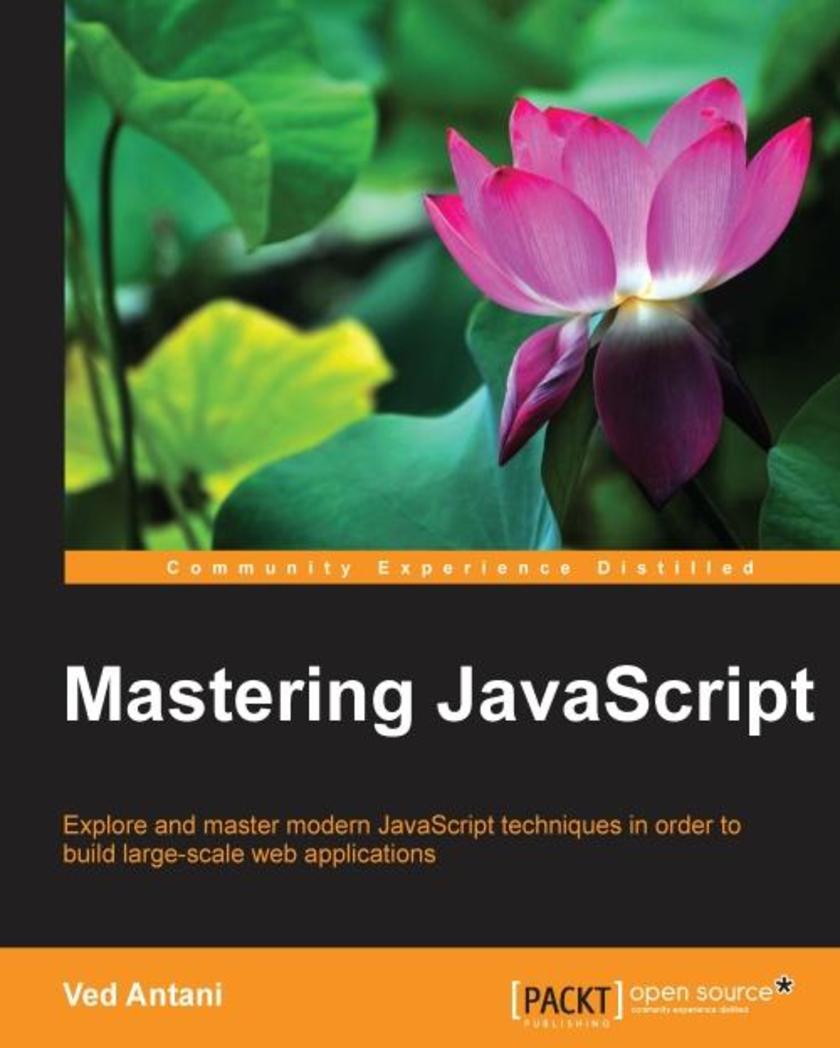
Mastering JavaScript
¥80.65
Explore and master modern JavaScript techniques in order to build large-scale web applicationsAbout This BookWrite powerful code with the high-level functions that JavaScript offersTest and debug issues with JavaScript code using various modern mechanismsOffers an expert's eye on the latest ES6 features and how these advanced tasks fit together in JavaScript as a wholeWho This Book Is ForThis book is ideal for web developers who are looking to master modern JavaScript concepts and design principles. You should already have an intermediate level of JavaScript knowledge before starting this book.What You Will LearnGet a run through of the basic JavaScript language constructsGet familiar with the Functions and Closures of JavaScriptExplore Regular Expressions in JavaScriptCode using the powerful object-oriented feature in JavaScriptTest and debug your code using JavaScript strategiesMaster DOM manipulation, cross-browser strategies, and ES6Understand the basic concurrency constructs in Java* and best performance strategiesLearn to build scalable server application in JavaScript using Node.jsIn DetailJavaScript is a high-level, dynamic, untyped, lightweight, and interpreted programming language. Along with HTML and CSS, it is one of the three essential technologies of World Wide Web content production, and is an open source and cross-platform technology. The majority of websites employ JavaScript, and it is well supported by all modern web browsers without plugins. However, the JavaScript landscape has changed dramatically in recent years, and you need to adapt to the new world of JavaScript that people now expect. Mastering modern JavaScript techniques and the toolchain are essential to develop web-scale applications.Mastering JavaScript will be your companion as you master JavaScript and build innovative web applications. To begin with, you will get familiarized with the language constructs and how to make code easy to organize. You will gain a concrete understanding of variable scoping, loops, and best practices on using types and data structures, as well as the coding style and recommended code organization patterns in JavaScript. The book will also teach you how to use arrays and objects as data structures. You will graduate from intermediate-level skills to advanced techniques as you come to understand crucial language concepts and design principles. You will learn about modern libraries and tools so you can write better code.By the end of the book, you will understand how reactive JavaScript is going to be the new paradigm.Style and approachThis is a comprehensive guide with a clear focus on practical use cases and patterns. Each chapter consists of best practices, useful advice, and a bunch of easy-to-follow examples that will build up your skills as you advance through the book.




 购物车
购物车 个人中心
个人中心



